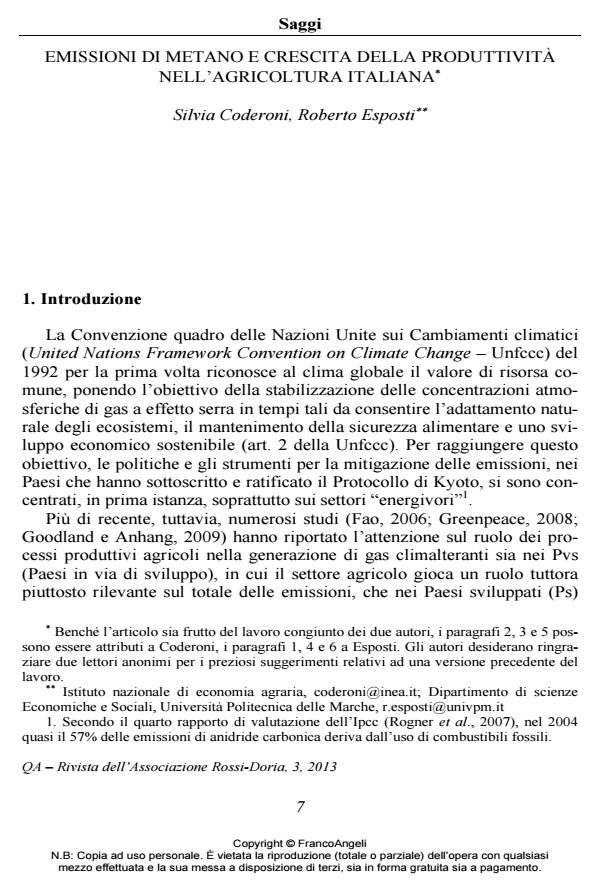Methane Emissions and Productivity Growth in Italian Agriculture
Journal title QA Rivista dell’Associazione Rossi-Doria
Author/s Silvia Coderoni, Roberto Esposti
Publishing Year 2013 Issue 2013/3
Language Italian Pages 37 P. 7-43 File size 556 KB
DOI 10.3280/QU2013-003001
DOI is like a bar code for intellectual property: to have more infomation
click here
Below, you can see the article first page
If you want to buy this article in PDF format, you can do it, following the instructions to buy download credits

FrancoAngeli is member of Publishers International Linking Association, Inc (PILA), a not-for-profit association which run the CrossRef service enabling links to and from online scholarly content.
The paper proposes an analysis of long-term agricultural methane emissions in Italian regions. Looking back over the past, this analysis shows a sustainable path achieved through the transformation of agriculture and its relative decline within the Italian economy. The paper proposes two distinct scenarios to analyze what kind of transformations could generate and support such sustainability in the future. The first concerns the reduction of the livestock population due to changes in dietary behaviour. The second is based on some changes in farming activity allowing for a further reduction of emissions with a constant or increasing level of production. EconLit Classification: O130, Q150, Q540
Keywords: Agriculture and environment, Agricultural productivity, Agricultural GHG emissions
- The complex farm-level relationship between environmental performance and productivity: The case of carbon footprint of Lombardy farms Edoardo Baldoni, Silvia Coderoni, Roberto Esposti, in Environmental Science & Policy /2018 pp.73
DOI: 10.1016/j.envsci.2018.07.010 - Is There a Long-Term Relationship Between Agricultural GHG Emissions and Productivity Growth? A Dynamic Panel Data Approach Silvia Coderoni, Roberto Esposti, in Environmental and Resource Economics /2014 pp.273
DOI: 10.1007/s10640-013-9703-6
Silvia Coderoni, Roberto Esposti, Emissioni di metano e crescita della produttività nell’agricoltura italiana in "QA Rivista dell’Associazione Rossi-Doria" 3/2013, pp 7-43, DOI: 10.3280/QU2013-003001